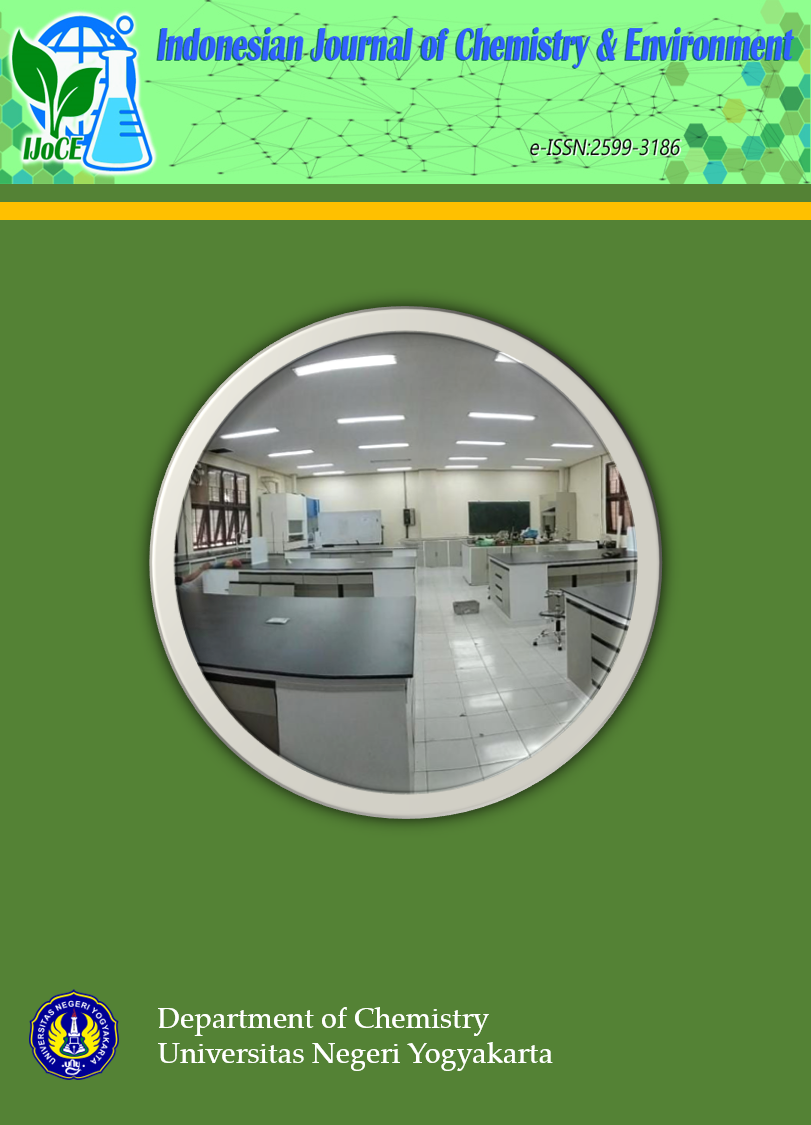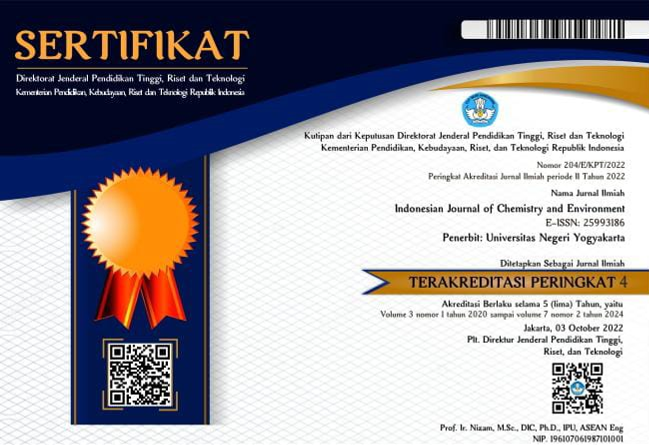Hydration Structures and Dynamics of Ga3+ Ion Based on Molecular Mechanics Molecular Dynamics Simulation (Classical DM)
DOI:
https://doi.org/10.21831/ijoce.v4i2.48401Abstract
The structure and hydration dynamics of Ga3+ ion have been studied using classical Molecular Dynamics (MD) simulations. The data collection procedure includes determining the best base set, constructing 2-body and 3-body potential equations, classical molecular dynamics simulations based on 2-body potentials, classical molecular dynamics simulations based on 2-body + 3 potential-body. The trajectory file data analysis was done to obtain structural properties parameters such as RDF, CND, ADF, and dynamic properties, namely the movement of H2O ligands between hydrations shells. The results of the research indicated that the hydration complex structure of Ga(H2O)83+ and Ga(H2O)63+ was observed in molecular dynamics simulations (MM-2 body) and (MM-2 body + 3-body), respectively. The movement of H2O ligands occurs between the first and second shell or vice versa in the MD simulation of MM-2 bodies but does not occur in MD simulations of (MM-2 bodies + MM-3 bodies). Therefore, the water ligands in the first hydrated shell are stable.
Downloads
Published
How to Cite
Issue
Section
Citation Check
License
Authors who publish with this journal agree to the following terms:
- Authors retain copyright under a Creative Commons Attribution–ShareAlike License (CC BY SA) that allows others to share: copy, and redistribute the material in any medium or format, Adapt: remix, transform, and build upon the material, for any purpose, even commercially.
- Authors are able to enter into separate, additional contractual arrangements for the non-exclusive distribution of the journal's published version of the work (e.g., post it to an institutional repository or publish it in a book), with an acknowledgement of its initial publication in this journal.
- Authors are permitted and encouraged to post their work online (e.g., in institutional repositories or on their website) prior to and during the submission process, as it can lead to productive exchanges, as well as earlier and greater citation of published work.










